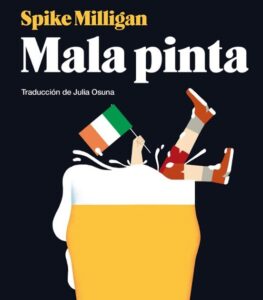About the book
Óscar Tarruella is one of the most important criminologists in our country, who has contributed to the resolution of countless cases, some of them with wide media coverage, for which he has received multiple awards. This book is a total and non-fiction approach, based on real cases in which he himself has participated, to the daily life of a professional investigator.
THE MOST MEDIA CASES IN THE COUNTRY
Óscar has actively participated in the investigation of some of the cases that have garnered the most media and public attention in our country. His contribution to them has often led to their resolution, but in others he remains in the process to reach the truth and solve the mysteries that surround them.
The case of Mario Biondo
The death of Mario, husband of a famous Spanish television presenter, occurred in May 2013. A decade later, people are still talking about this gruesome and media case, of which Óscar highlights the concept of the “black hand” and the weight of public opinion about the victim through the media.
Tarruella, after analyzing the case and like other fellow investigators, concluded that it was a homicide and not a suicide. Óscar establishes a relationship with the Biondo family, especially with Santina, his mother, and spread the case through his YouTube channel from a criminalist perspective, attracting the attention of many media outlets.
A new report is prepared for the Palermo court in which, among other things, the different versions of the events given by Mario’s widow and his alleged substance consumption are exposed. Information selectively leaked by the widow, analysis of the phone calls of both, the contradictory statements of witnesses, Mario’s conversations on the day of his death, the irregularities in the forensic report… Tarruella analyzes all the errors that were made in the initial investigation of the case and argues why everything indicates that it is a homicide case.
Following Oscar’s appearance on a television show, a new witness has emerged from the intimate surroundings of Mario and the widow. This new information has served to file the family’s request to open the case in Spain. Yes, “open”, not “reopen”. The domino effect begins.
Justice for Deborah
That of Déborah Fernández is one of the great unsolved crimes in the history of Spain. On April 30, 2002, the young woman left the house the afternoon of her disappearance to go for a walk, and eleven days later her lifeless body appeared. A case that shocked and divided the population equally. In the summer of 2020, Óscar began to investigate the case with the family’s permission, this time focusing his work on the methodology and praxis carried out by investigators for almost two decades.
Using the refined chronology of the day of the events carried out by the victim’s family, Óscar finds different contradictory information from Déborah’s boyfriend and those close to him, especially about his alibis and locations on the day of the disappearance. During the subsequent years, different statements from Déborah’s boyfriend followed one another with more contradictory information, increasing suspicion about him, but without him being charged.
As in other cases investigated by the author, he soon notices different irregularities, errors in the case and negligence in the police investigation protocols and processes of the case. Among them, a detail that encourages both Tarruella and the family to request an exhumation of Déborah’s body, so many years later, and finding hair, fibers and male DNA under her nails.
Almost twenty years later, the victim’s boyfriend was charged, and to this day Óscar is still involved in the investigation of the case to obtain “justice for Déborah.”
Cristina La Veneno
The La Veneno case was one of the most talked about in the country. Although Tarruella initially refused to investigate Cristina’s case, he accepted the proposal of a young journalist who obtained permission from the victim’s family. In this investigation, Óscar found contradiction after contradiction in the statements of Cristina’s partner, the information provided by her neighbor, the police report and the report from the La Paz hospital on her injuries.
There was a special interest in ruling that Cristina’s death had been accidental, a blow in the bathtub after having consumed pills, but the evidence of the scientific police and the statements of several witnesses and the family pointed towards a homicide.
Óscar exhaustively analyzed all the evidence and police reports, contrasted the data of what happened in the hours before and after Cristina’s admission to the hospital and, above all, the erratic and contradictory statements of her partner about what happened that night. . Where was he? Why, after such a strong and deep blow, were Cristina’s clothes spotless and without a blood stain? Why didn’t she call an ambulance?
After Cristina’s death and the entire media circus that took place in the days that followed, irregularities continued to occur in the investigation of the case, such as the forensic reports and judicial experts’ reports, which supported that the injuries were compatible with an accidental death, data that contradicts what the ocular inspection of the scientific police revealed.
After Óscar studied and prepared an exhaustive report, Cristina’s family requested the reopening of the case, but the Prosecutor’s Office denied it even though the report attested to various negligence in the investigation and supported the hypothesis of homicide.
Source: https://algunoslibrosbuenos.com/diario-de-un-agente-de-homicidios


